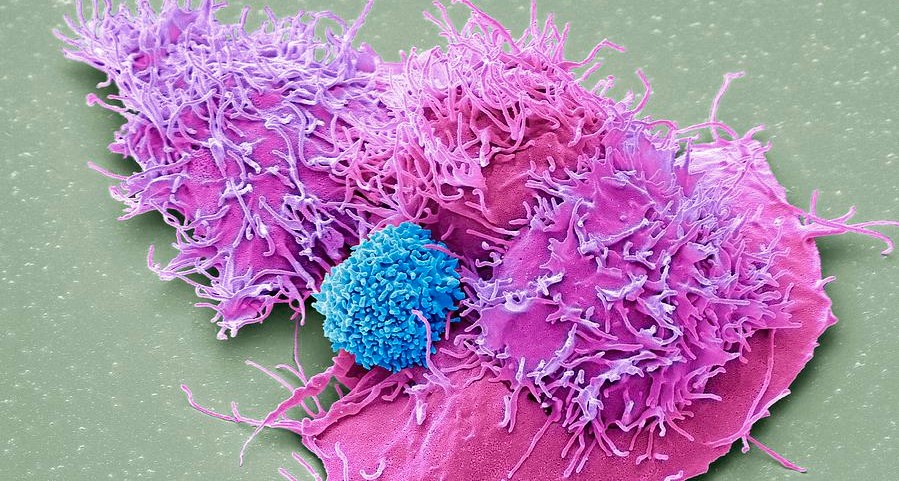Nanobody-based sensors reveal a high proportion of mGlu heterodimers in the brain.
Meng J, Xu C, Lafon PA, Roux S, Mathieu M, Zhou R, Scholler P, Blanc E, Becker JAJ, Le Merrer J, González-Maeso J, Chames P, Liu J, Pin JP, Rondard P


The Marseille Cancer Research Center celebrates its 50th anniversary ! -
The recent successes of therapeutic antibodies called immune checkpoint inhibitors (ICIs) blocking the inhibitory receptors found on tumor-infiltrated immune cells have revolutionized the therapy of several cancers, to the point that immunotherapy is now considered the fourth pillar of cancer therapy together with surgery, radio and chemotherapy. Still, only a minority of treated patients benefit from those treatments, and there is an urgent need to expand the arsenal of ICIs. Beside the classically targeted T cells, natural killer (NK) cells are reportedly important actors of the anti-tumor immune response, through the killing of tumor cells, but also and most importantly through the secretion of several cytokines and chemokines that can recruit and activate cells of the innate and adaptive immune systems.
The main interest of our lab is to use antibody engineering solutions to generate innovative molecules able to efficiently modulate the anti-tumor immune response through the recruitment and activation of immune cells using multispecific cell engagers or multispecific immune checkpoint inhibitors, or through the vectorization of radionuclides and nanoparticles.
Our team has developed a solid expertise in the generation and use of nanobodies, corresponding to the variable domain of antibodies naturally devoid of light chain found in camelids, for cancer therapy and diagnostic using in vitro selection methods. We are exploring the possibilities offered by this technology for the development of innovative cancer imaging and therapy approaches.

One of our main interest is to design effective immune cell engagers (ICE) targeting different effector cells such as NK cells, T cells, neutrophils or macrophages. Their mechanisms of action and their capacity to bypass the possible resistance mechanisms set up by the tumor cells to escape their action is investigated in vitro using 2D and 3D cellular models. The impact of the formats on the ICE biodistribution and pharmacokinetic properties is also evaluated by in vivo imaging, and their therapeutic efficacy in murine models repopulated with human immune cells.
The exact mechanism by which cell engager architecture regulates the formation of immunological synapse and thus cell engager potency, remains largely unexplored. Understanding the structure-function relationships between cell engager architecture, immunological synapse formation and function could accelerate the design of new cancer therapies. In a consortium including biophysicists specialized in the measure of mechanical forces applied to immune receptors, in the design of controlled patterned structures including lipid bilayers as well as the national pioneer in DNA origami techniques, we are exploiting the power of DNA origami approaches to finely design and test a large variety of cell engagers varying in valency, affinity, specificity, rigidity, and size.
To control, in space and time the activation of T cells, we recently engineered a new type of optogenetic-based Light-inducible T cell engagers named LiTe, which provide the capacity to trigger in space and time tumor cell killing by cytotoxic T cells in a light-dependent way. We also demonstrated the possibility to influence the outcome of T cell activation by modulating the temporal pattern of the TCR stimulations. We are developing Light-inducible T cell Engagers for a spatiotemporal control of tumor cell killing in vivo.
Ideally a therapeutic product such as ICE should be present at high concentration in the tumor microenvironment to maximize its effects, while being nearly absent from the systemic circulation to avoid any off target or on target off tumor targeting.
We are exploring several ways of achieving this goal. Oncolytic viruses (OVs) are viruses that can infect cancer cells, leading to their lysis while sparing normal cells. The most common mechanism is a loss of type I IFN signaling by cancer cells conferring them resistance to the immune system but sensitizing them to oncolytic viruses. Interestingly, OVs can also be engineered (armed) to lead to the intratumoral secretion of cytokines, chemokines or therapeutic constructs. We are developing a program aiming at i) improving the safety of oncovirus therapy through nanobody based retargeting of the virus, and ii) arming the virus to induce ICE secretion in the tumor microenvironment. The acidic microenvironment of tumors, as a result of glycolysis, hypoxia, and insufficient blood perfusion, is a hallmark of cancer.
In collaboration with a team of chemist specialized in the generation of nanoparticles and nanocapsules, we aim at designing new nanocapsules targeted to tumor cells via a the surface display of nanobodies. Once enriched in the acidic microenvironment, the walls of those nanocapsules is destabilized, leading to the a conditional release of their therapeutic content within the tumor.
Team publications
Meng J, Xu C, Lafon PA, Roux S, Mathieu M, Zhou R, Scholler P, Blanc E, Becker JAJ, Le Merrer J, González-Maeso J, Chames P, Liu J, Pin JP, Rondard P
Tapia-Galisteo A, Sánchez Rodríguez Í, Aguilar-Sopeña O, Harwood SL, Narbona J, Ferreras Gutierrez M, Navarro R, Martín-García L, Corbacho C, Compte M, Lacadena J, Blanco FJ, Chames P, Roda-Navarro P, Álvarez-Vallina L, Sanz L
Haubrich J, Font J, Quast RB, Goupil-Lamy A, Scholler P, Nevoltris D, Acher F, Chames P, Rondard P, Prézeau L, Pin JP